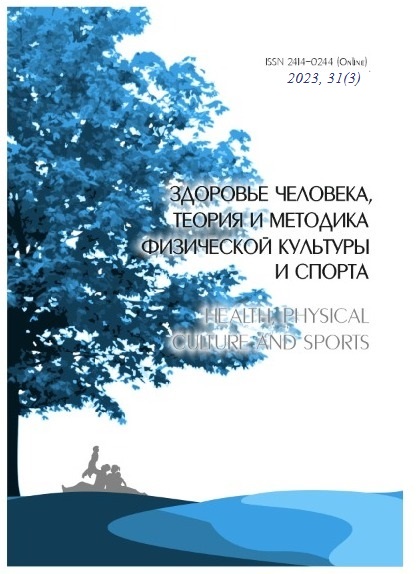EFFECT OF SMOKING ON EXHALED CARBON MONOXIDE AND NITRIC OXIDE IN PATIENTS WITH CHRONIC OBSTRUCTIVE PULMONARY DISEASE
Abstract
To date, points of view regarding the effect of smoking on the indicators of exhaled air are very contradictory, especially with regard to the examination of patients with chronic obstructive pulmonary disease (COPD) suffering from tobacco dependence. Basically, a comparative analysis is carried out by researchers solely on the fact of the presence of tobacco dependence, without taking into account the indicator of the smoking index (CI), as such, or the data obtained from the examination of smoking COPD patients and healthy volunteers are compared. Objective: to evaluate the change in the concentration of carbon monoxide (CO), nitric monoxide (NO) and carboxyhemoglobin (COHb) in the exhaled air of patients with COPD, depending on the status of smoking and CI. Material and research methods. 96 patients with COPD were examined, the average age of which was 54.6±5.9 years, the duration of the disease was 15±4.8 years. 70 patients (72.9%) who participated in the study suffered from tobacco dependence, while CI ≤10 pack-year was observed in 2.8% of them, 11-20 pack-year in 42.9%, 21-30 pack-year in 40.0% and >30 pack-year in 14.3%. As part of a comprehensive examination, all patients underwent determination of CO (ppm) and COHb (%) in exhaled air using the MicroCO device (Micro medica, UK) and the level of NO was assessed using the Niox Mino analyzer (Aerocline, Sweden). The results of the study. During the analysis of the obtained data, we noted an increase in the average concentration of CO in the exhaled air in all smoking patients, while the increase in the indicator was directly proportional to the CI. A similar picture was observed with respect to the COHb level. The concentration of NO in the exhaled air, on the contrary, showed a tendency to decrease with increasing CI. A comparative analysis of the obtained data was carried out in three groups: I - non-smoking patients with COPD (n=26), II - patients with COPD with an IC of 11-20 pack-years (n=30) and III – patients with COPD with an IC of 21-30 pack-years (n=28). In terms of peripheral blood saturation, significant differences compared with the group of non-smokers were found in patients with IC 11-20 pack-years and with IC 21-30 pack-years, while there were no statistically significant differences between these groups of smoking patients. The CO level in smokers, regardless of CI, was significantly higher than in non-smokers, while in COPD patients with CI 21-30 pack-year it was also significantly higher than in patients with CI 11-20 pack-year. The COHb index in smokers with COPD was also significantly higher than in non-smokers, but when comparing data in the group with IC 11-20 pack-years and IC 21-30 pack/years, no statistically significant differences were found. In terms of NO in exhaled air, statistically significant differences were noted when comparing data in the group of non-smoking patients with COPD with the results obtained in groups of patients with IC 11-20 pack-years and with IC 21-30 pack-years, as well as when comparing data in these groups of smokers among themselves. Conclusions. The study revealed a statistically significant increase in the level of CO in the exhaled air, depending on the status of smoking and CI. It was determined that the smoking factor in COPD patients affects the level of NO in the exhaled air, causing its significant decrease in COPD patients with CI >10 pack-year compared to non-smoking COPD patients.
Downloads
References
Stepanov E. V. Methods of highly sensitive gas analysis of molecular biomarkers in study of exhaled air // Physics of Wave Phenomena. 2007. Vol. 15 (3). P. 149-181. Doi:10.3103/S1541308X0703003X. Wei X. M., Kim H. S., Kumar, R. K. et al. Effects of cigarette smoke on degranulation and NO production by mast cells and epithelial cells // Respir. Res. 2005. Vol. 6. P. 108. Doi: 10.1186/1465-9921-6-108. West J. B. Carl Wilhelm Scheele, the discoverer of oxygen, and a very productive chemist // American journal of physiology. Lung cellular and molecular physiology. 2014. Vol. 307 (11). P. L811-6. West J. B. The Collaboration of Antoine and Marie-Anne Lavoisier and the First Measurements of Human Oxygen Consumption // Essays on the History of Respiratory Physiology. Perspectives in Physiology. Springer, New York, NY. 2015. doi: 10.1007/978-1-4939-2362-5_12.
Copyright (c) 2023 Health, physical culture and sports

This work is licensed under a Creative Commons Attribution-NonCommercial 4.0 International License.
An author should not normally publish manuscripts describing essentially the same research in multiple journals or publication venues. Such redundant publication is generally considered to constitute unethical publishing behavior, and if discovered may result in a manuscript under consideration being rejected, or a published article being retracted.
Authors of manuscripts reporting on original research should present an accurate account of the work performed, accompanied by an objective discussion of its significance. Underlying data should be represented accurately in the manuscript. The manuscript should contain sufficient detail and references to permit others to replicate the work. The fabrication of results and the making of fraudulent or knowingly inaccurate statements constitute unethical behavior and may be cause for rejection or retraction of a manuscript or published article.





